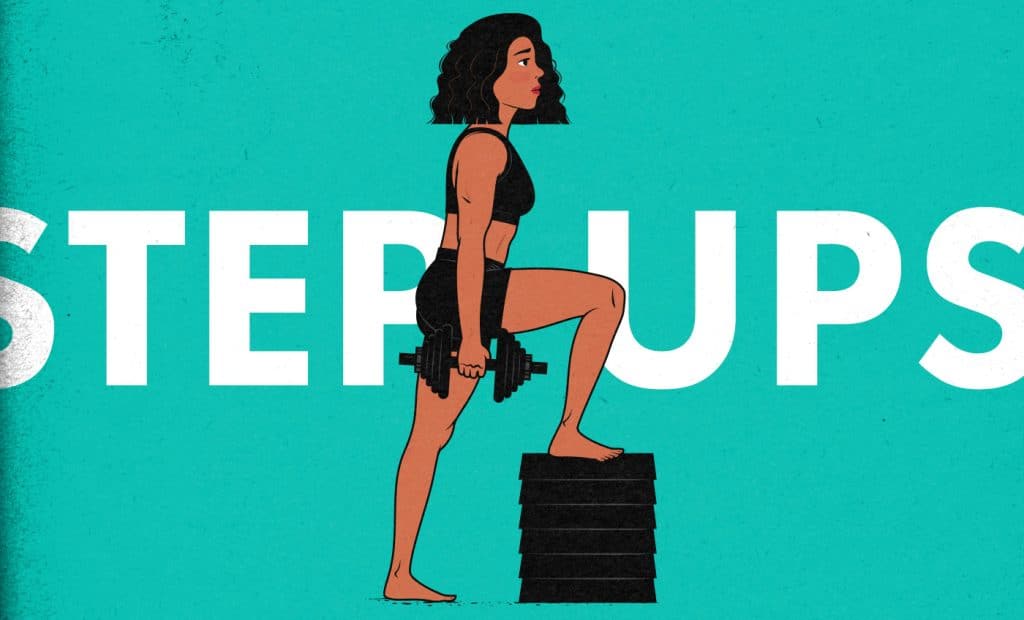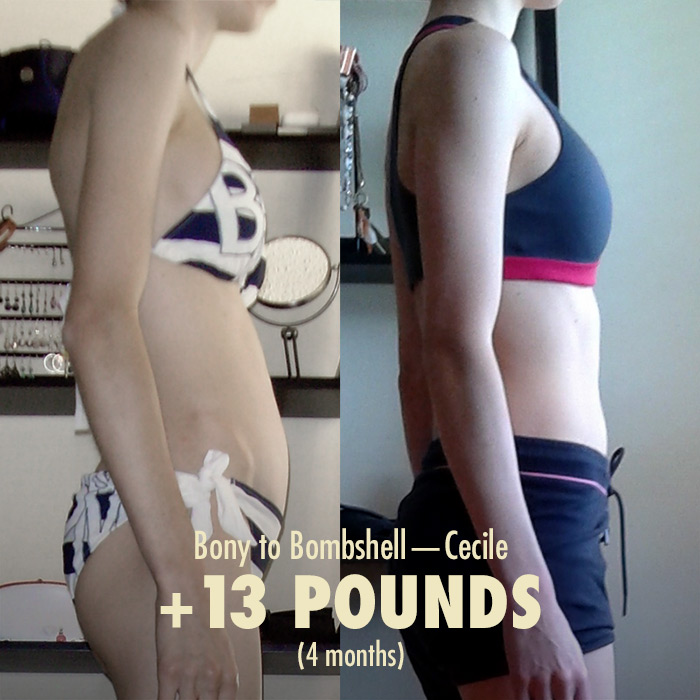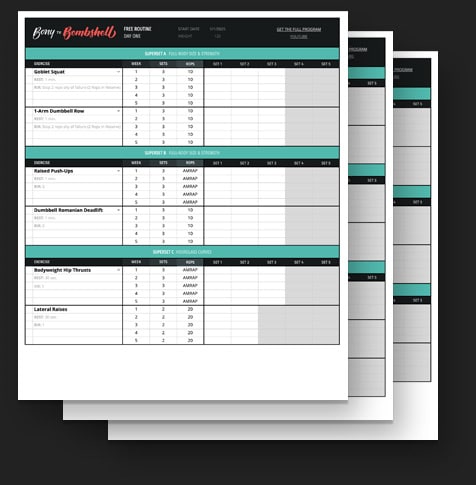
Dumbbell Step-Ups: Full Guide for Women
Looking for a good exercise that will help you build a strong and toned lower body? The dumbbell step-up is a great choice. This simple but challenging exercise is a great addition to any workout, hitting the quads, glutes, and hamstrings. Let’s take a closer look.
Dumbbell Step-Up Overview
Target Muscles
The dumbbell step-up is a compound exercise that targets multiple muscle groups in the lower body. It mainly works the quads, which are the muscles on the front of your thighs. But it also works the hips, hamstrings, calves, and the forearms—although not as much.
The dumbbell step-up isn’t just a lower-body exercise. Because it’s a compound movement that involves many joints and can be loaded up with a heavier weight, it can also work the core, the back like the spinal erectors, and even the forearms from holding the dumbbells. Getting tall and doing the proper form can help improve your core stability, which is important for developing good posture and avoiding future back pain.

Unilateral Work Has Athletic Benefits
Step-ups with dumbbells are a unilateral workout, which means that you do one side at a time. By working one side of the body at a time, this helps to work stabilizer muscles, which improves balance and makes you more athletic.
Equipment Needed For The Dumbbell Step-Up
All you need to do a dumbbell step-up is a set of dumbbells (or kettlebells) and a higher surface that can easily support your weight. If you’re at home, you can use a regular bench if you’ve got a home gym, or even a sturdy chair can work.
At the gym, they’ll have any dumbbells you’ll need and the plyo boxes or a proper step-up box you can use. Ideally, don’t use the bench at the gym because the surface isn’t as sturdy, and it makes the benches dirty.
Dumbbell Step-Up Video Demonstration
Here’s Marco demonstrating the different versions of the dumbbell step-up.
Dumbbell Step-Up Form Explanation
It’s a pretty simple exercise. Here’s how to do it.
- Set up a sturdy box or bench to a height you feel comfortable with. Usually, your knee will make a 90-degree angle or slightly less when the foot is on the box.
- Grab two dumbbells that you can handle well.
- Get tall, put your right foot onto the bench or step, and make sure your whole foot feels solid.
- Push down into your right heel to lift your body up onto the bench or box.
- Bring your left foot up to the bench/box to be next to your right foot. This is the top of the movement.
- Now bend your right knee, step back down with your left foot, and keep your right foot up on the box. That’s one rep.
- Do the number of reps listed on your workout sheet for that leg.
- When you’re all done, the reps on the right foot take your right foot down.
- Put your left foot up on the box and repeat the same amount of the reps for the left side.
- That’s one set.
Avoid making these dumbbell step-up mistakes:
Okay, so now that we know what proper form looks like, what mistakes do many female beginners make with the dumbbell step-up?
- Don’t push through your tippie toes, push through your heel. Your whole foot should be grounded on the box (often called the tripod foot) and not lifting up.
- Don’t let your knees cave inwards as you push down. Keep your knee directly over your ankle.
- Don’t jump off using your back foot. Use your front leg to push through the box. We’re working that leg that’s on the box, not the back one.
- Don’t use too much weight. Err on the side of using too little of weight as you discover what weights are right for you. If it feels too easy, select heavier dumbbells and count your last set as a warm-up. You may need to try a few weights to find the right one. That’s okay.
- Don’t use too little weight. This is an exercise for your legs—and those legs are strong! Don’t be afraid to challenge yourself. If you can do more than 20 reps per leg, you need to get heavier weights.
- Don’t lean too far forward. The more you lean forward, with your knees way too far beyond your feet, the more it’ll work your quads. The more upright and tall you are, the more balanced the exercise will be, and it’ll hit your glutes more.
- Don’t go too quickly on the descent. Some women just sort of hop down or fall down on the lowering part of the exercise. This is an exercise you want to control the descent and learn to use those muscles. Your muscles need time under tension when they’re really working to get the point to grow. You should explode powerfully up and control the descent down slowly. Use those muscles, and feel the burn.
- Don’t switch legs as you come down. Leave the main front leg up on the box, and do one leg at a time.
Using Dumbbell Step-Ups In A Workout
Use A Moderate Rep Range
In general, for muscle growth and muscle size, you want to choose a weight that you can do 4–40 repetitions with. The sweet spot, though, is often the 8-12 rep range. The step-ups are no exception. If you find yourself falling under 5 reps per leg, use a lighter weight. If you can do more than 20 repetitions per leg, use a heavier weight. That will guarantee that the workout is helping you gain both muscle size and muscle strength and not making endurance adaptations. But your strengths and the weights you have available will vary, so some flexibility will go a long way.
Challenge Yourself But Stop Shy Of Failure
Ideally, you’ll stop your set when you’re just about to fail and have a rep or two left in you. But if you’re a beginner, it’s hard to know exactly how hard you’re pushing yourself. If you aren’t sure if you’re taking your sets close to failure, try doing more reps. Try pushing yourself all the way until you can no longer do any more step-ups with perfect form. That way, you’ll know what it feels like. You might be surprised that you were a lot stronger than you thought. Next time, stop right before that point of failure.
Start With Two Sets, and Add More When Needed
Start with just a couple of sets, then over time, add more sets as you get stronger. We recommend doing two sets in the first week. Practice your form, find the right weights, and take your time learning the movement.
Next week, if you aren’t too sore at the start of each workout, try adding a set to each exercise. If that goes well and you feel ready for more, add another set next week. You can do around 3–6 sets per exercise. Most people will do best with 3–4 sets, especially with a unilateral exercise like this one which takes longer. If you ever start to feel worn down, or if you’re coming back after a long break, start the cycle over again, going back to just two sets per exercise and rebuilding from there.
Don’t Rest Between Legs & Rest 1-2 Minutes Between Sets
Don’t rest between legs. Do your weaker leg first, then your other leg, to match the amount of reps. That’s one complete set done, then rest. This will help catch your weaker leg up to your stronger leg and create balance in the body,
How long you rest between sets of step-ups isn’t that important. Whether you rest for 2 minutes or 10 minutes, you’ll still stimulate a similar amount of muscle growth. The important thing is that you rest long enough to catch your breath, ensuring that your cardiovascular system doesn’t limit the performance of your muscles.
We want to challenge your leg muscles, not just your heart (though your heart will get a good workout, too!).
The main reason to rest for just a couple of minutes is to keep your workouts shorter. You don’t want to spend all day in the gym. But if you need more rest or get interrupted partway through your workout, no problem. Just pick up where you left off.
If you want to blast through your workout even faster, you can do the lifts in a circuit/superset. Do a set of step-ups, rest a minute, then do a set of raised push-ups on your step-up box, rest a minute, then do your second set of step-ups, and then do your second set of raised push-ups. That way, you’re still giving different muscle groups plenty of time to recover between sets, but you’re doing another exercise during the rest period.
Free Routine For Female Beginners: Step-Ups Priority With Full Body Workout
If you don’t have a workout, you might be interested in our full Bony to Bombshell program. A sample beginner’s workout for women, with some priority given to the step-up exercise, could look like this:
- Dumbbell Step-Ups: 2 sets of 10 repetitions per leg.
- Raised Push-Ups: 2 sets of as many reps as you can.
- Dumbbell Romanian Deadlift: 2 sets of 10 repetitions.
- 1-Arm Dumbbell Row: 2 sets of 10 repetitions.
- Lateral Raises: 2 sets of 10 repetitions.
- Bonus Glute Work: 2 sets of glute bridges or hip thrusts
GET THE Free GOOGLE SPREADSHEET OF THE
female BEGINNER’S step-ups priority FULL-BODY WORKOUT

Get the workout as a Google spreadsheet. You’ll be able to pick from exercise alternatives, and fill out the sheet.
Plus, we’ll make sure you’re on the Bony to Bombshell newsletter, and send you all of our best women's muscle-building content.
Frequently Asked Questions About The Weighted Step-Ups
Here are some of the most common questions we’ve gotten from women about the dumbbell step-up:
Q: For the dumbbell step-up, how heavy should my dumbbells be?
A: The weight of the dumbbells depends on your own level of strength. You will need to do trial and error, and the weight you use will depend on how fit and strong you are to start. Don’t let your ego choose. Choose one that lets you work the muscles properly. As a beginner, start with a weight that feels comfortable yet challenging. As you get stronger, it’ll get easier, and it’s time to raise the weight. Try to find a weight that will let you do 8–12 reps per leg with good form.
Q: How high should the step or box be?
A: The height of your step depends on your own comfort and athleticism. Obviously, the lower the step, the easier it’ll be. If you’re relatively healthy, going for a step that makes your knee a 90-degree angle (or a little bit less) when the foot is up is a good default.
As you get stronger, you can experiment with high step-ups, which can stretch the glute muscles a bit more, allowing for more muscle growth there. However, that version requires more stabilizer strength and is more challenging in terms of skill. Beginners ought to stick with something lower until they feel comfortable with it.
Q: How often should I do step-ups?
A: That depends on your goals. If you want to master the step-up exercise, you can train the exercise every workout, realistically.
But if your goal is just to get general quad and glute growth, you’ll want to pair that exercise with other lower-body exercises for balanced growth. Think of things like Goblet squats, Romanian Deadlifts, and glute bridges.
Q: Can I do a step-up with dumbbells at home?
A: Of course. You can do the dumbbell step-up at home if you have a sturdy chair or a bench and a set of dumbbells (or kettlebells). You can also change the exercise if you need to by using a smaller step or no weights. (You can even hold a backpack full of books as weight and just do more reps.)
Q: How can I modify the dumbbell step-up? What are some variations?
A: If you’re new to the dumbbell step-up, stick to the classic form. Two dumbbells and a medium-height box. Keep one leg up at a time. You can get great muscle growth just by being patient, putting in the effort, and using heavier and heavier dumbbells over time as you get stronger.
But after you’ve mastered that, you can modify the lift if you’re looking for more variety.
- Alternating leg step-up. You can do one rep of your right leg, bring your right foot down, lift up your left leg, and do your left leg rep. This version is more dynamic and is closer to real-life walking or stair climbing. (It feels more athletic/coordination oriented but causes less muscle burn.)
- One dumbbell same side leg step-up. This loads the weight up onto your supporting leg, changing the dynamics, especially on the hips/obliques.
- One dumbbell opposite side leg step-up. This loads the weight on the opposite leg, changing the dynamics, especially on the hips/obliques on the opposite side of the weight.
- Dumbbells up-top in racked position step-up. This will work your shoulders a bit more and your core because the weight is now higher up on your body. It will be easier on your forearms.
- Higher step/box. This will stretch the glutes more, allowing for more muscle-growth stimulus to the glutes. However, it’s a more athletic version of the lift and will require a larger descent and better balance. It can be a good version to include for more glute growth, but if that’s your goal, you will want to include other glute lifts, such as the glute bridge or the hip thrust, which do a better job isolating the butt muscles.
- Using a barbell during the step-up. Most women, or men for that matter, will never need to use a barbell during the step-up. The main advantage of a barbell is that it allows you to use a heavier weight because it brings stability compared to dumbbells. But for most people, dumbbells will be more than heavy and challenging enough. But if you’ve been doing the step-ups for a decade, or you’re a professional athlete, it’s certainly an option.
What Next?
If you liked this article, you’d love our muscle-building newsletter. We’ll keep you up to date on all the latest muscle-building information for women. Or, if you want us to walk you through the process of building muscle, including teaching you the lifts, giving you a full workout program, a complete diet guide, a recipe book, and online coaching, check out our Bony to Bombshell Program.



FREE women's Muscle Growth MINI-COURSE
Get our 5-part female bulking mini-course that covers everything you need to know about:
Here are some related articles